A large, stunning Victorian carved amethyst scarab pendant on a 14k gold figaro chain.
Archeological discoveries during the Victorian era influenced fashion and Egyptian Revival jewelry was very en vogue. It was also an era when urban Victorians were becoming increasingly disconnected from nature and became obsessed with bringing vignettes of a pastoral life into their controlled environments – taxidermy, fauna under small display domes, and adorning their finery and jewelry with real or representations of bugs and insects were all commonplace.
Amethyst has been worn throughout the centuries as a symbol of purity and spirituality, an amulet of protection against evil, and as a talisman of success and wealth.
In Ancient Egypt, scarab amulets were used to protect the deceased in the afterlife. “Heart Scarabs” with inscriptions from the Book of the Dead were placed on the chest of the mummy and were supposed to prevent the heart from revealing any offenses against the gods during the final judgement. For the living, a scarab amulet provided the wearer with protection and confidence in the certain knowledge of reincarnation. This belief sprang from the Egyptians understanding of the ways of the scarab or dung-beetle – a large insect that after laying its eggs in a ball of dung, rolls the ball before it wherever it goes. When the young beetles hatch they appear, seemingly miraculously, from the dung. For the ancient Egyptians, this behavior came to represent the actions of the sun god Khepri who was thought to push the sun through the sky. The beetle’s life cycle then came to symbolize spontaneous creation, rebirth, and resurrection – like the soul rising from the dead.
Description
A large, stunning Victorian carved amethyst scarab pendant on a bright and sparking solid 14k gold chain.
Sizing + Info
This is an antique pendant on a vintage chain.
Chain is 24" long.
Shipping
$8 standard shipping, free shipping on orders of $100 or more
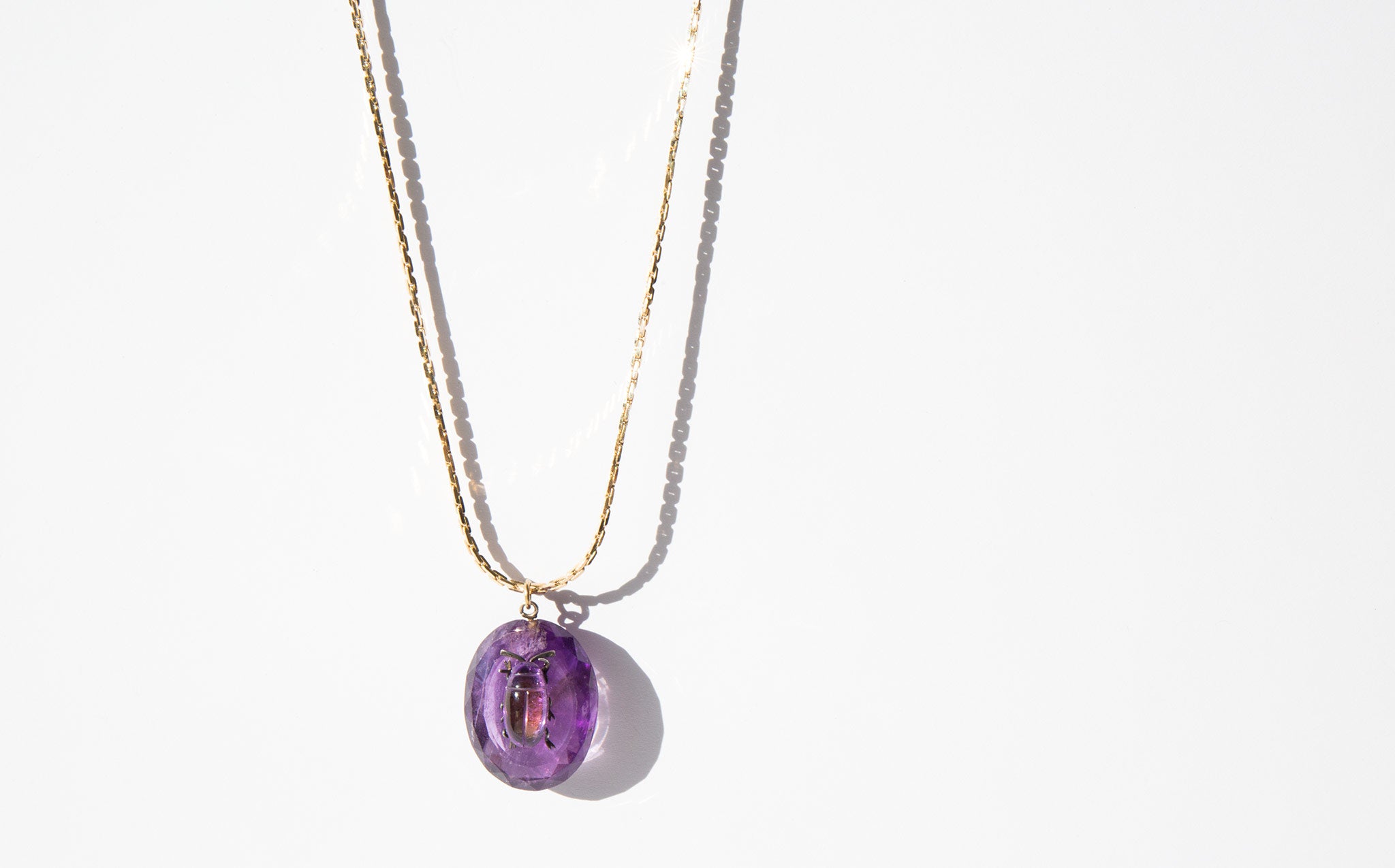

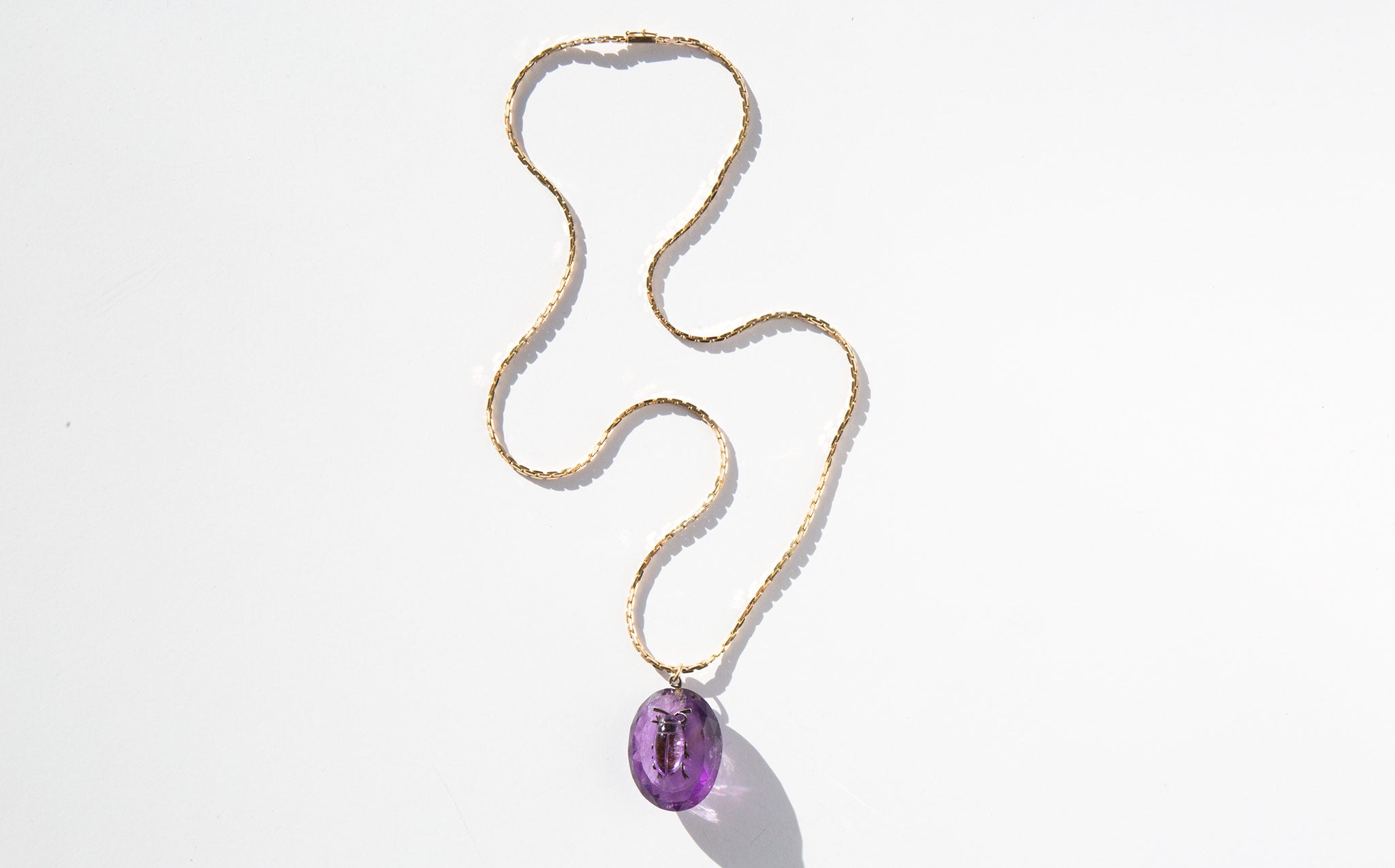
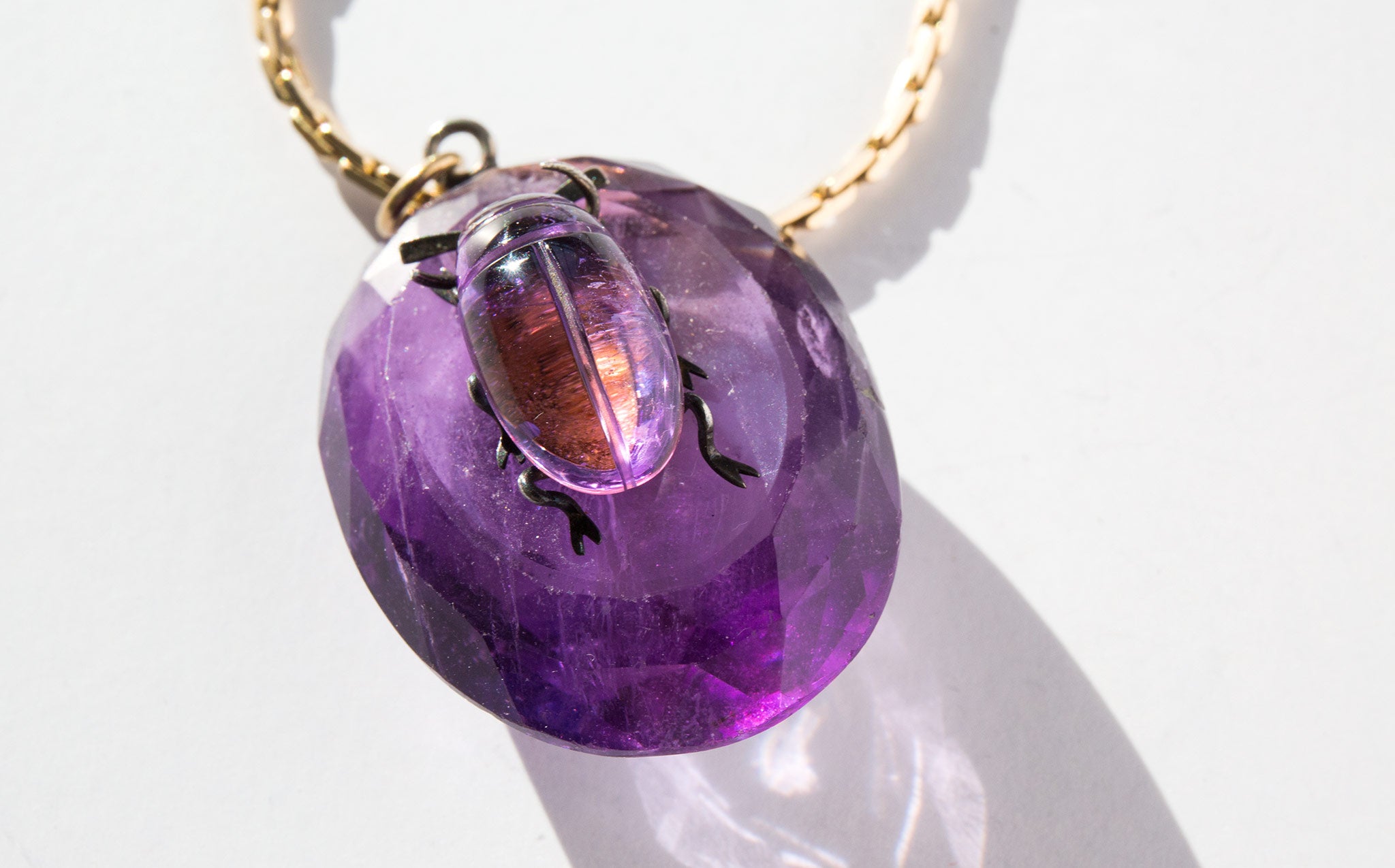
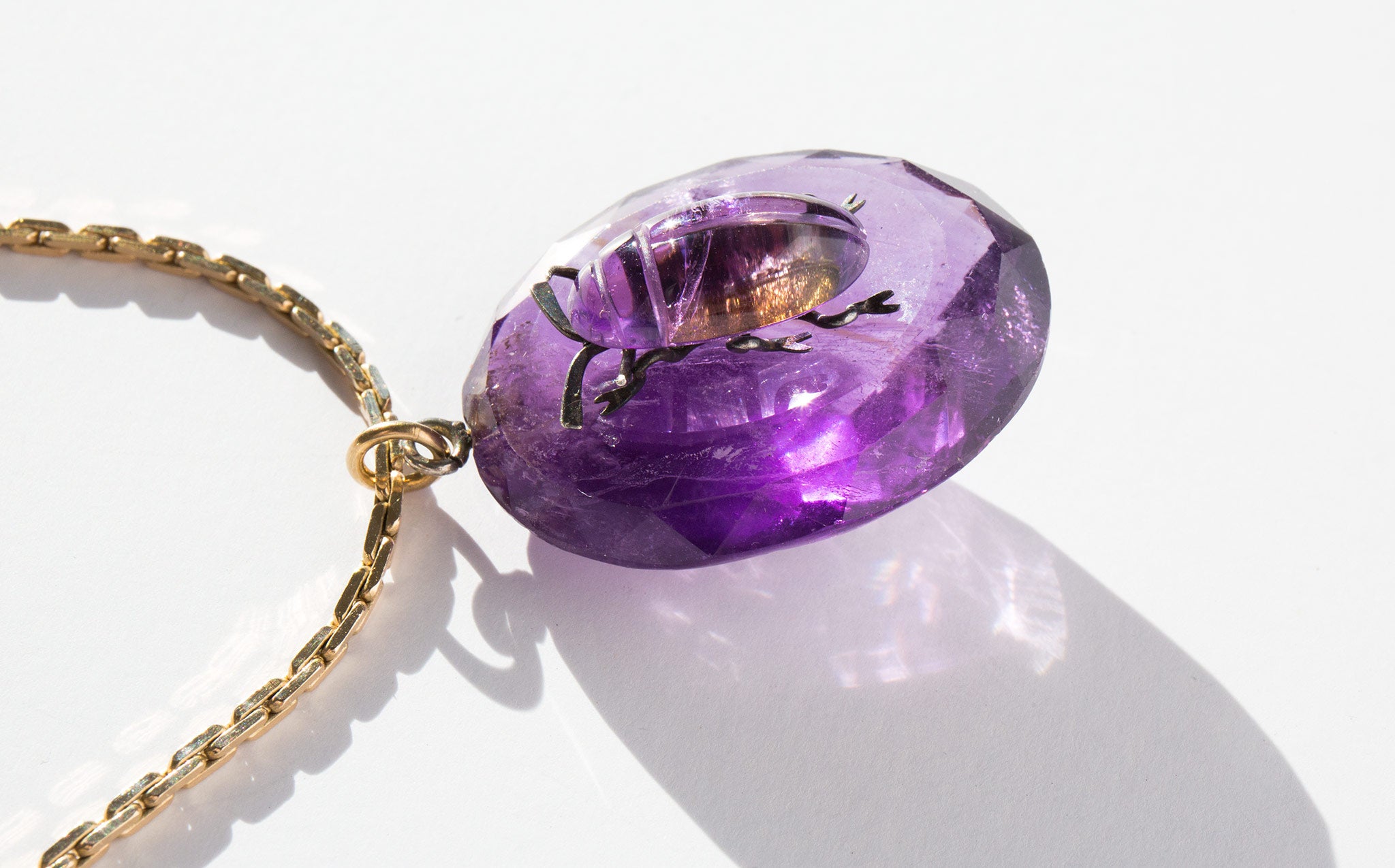
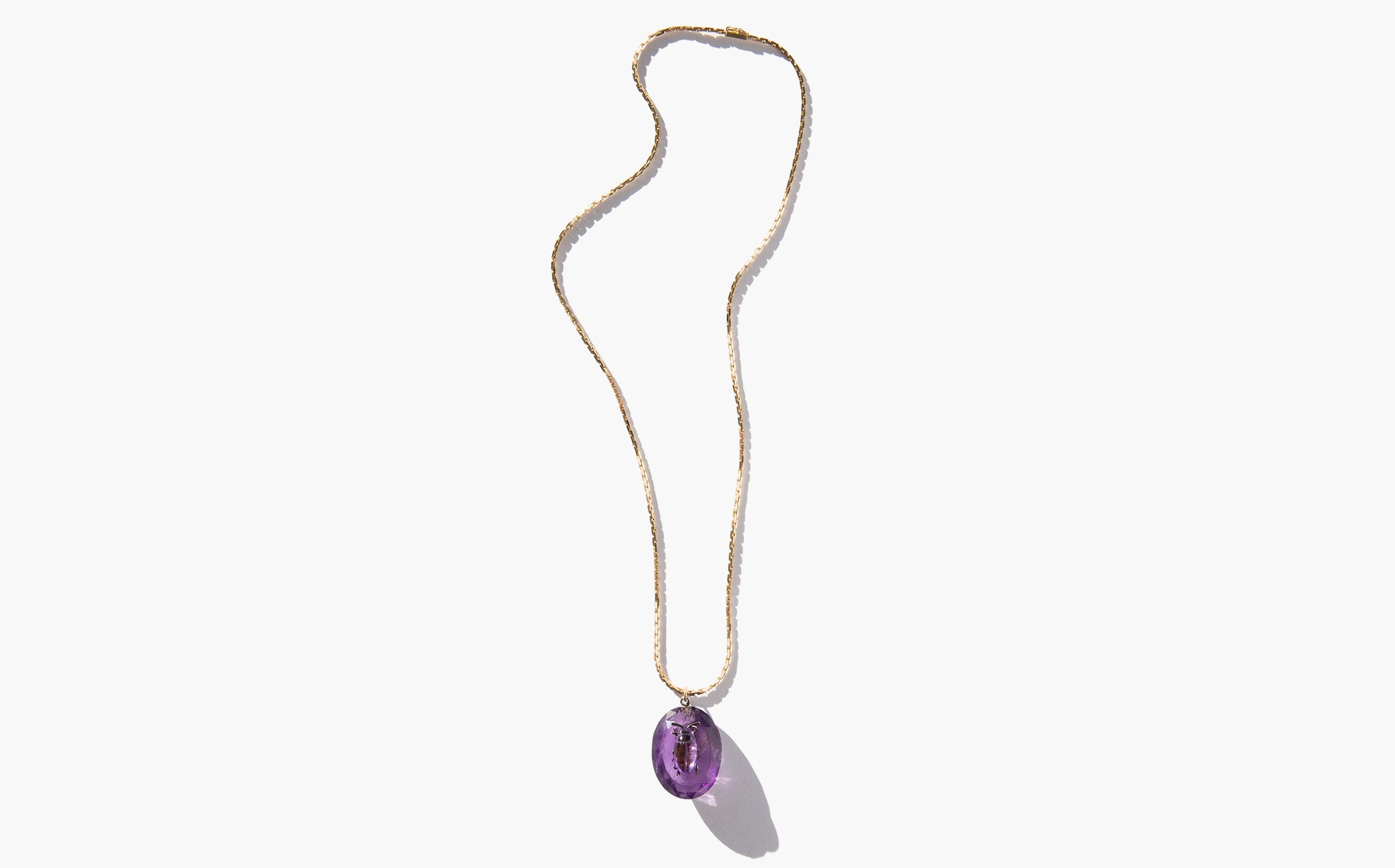
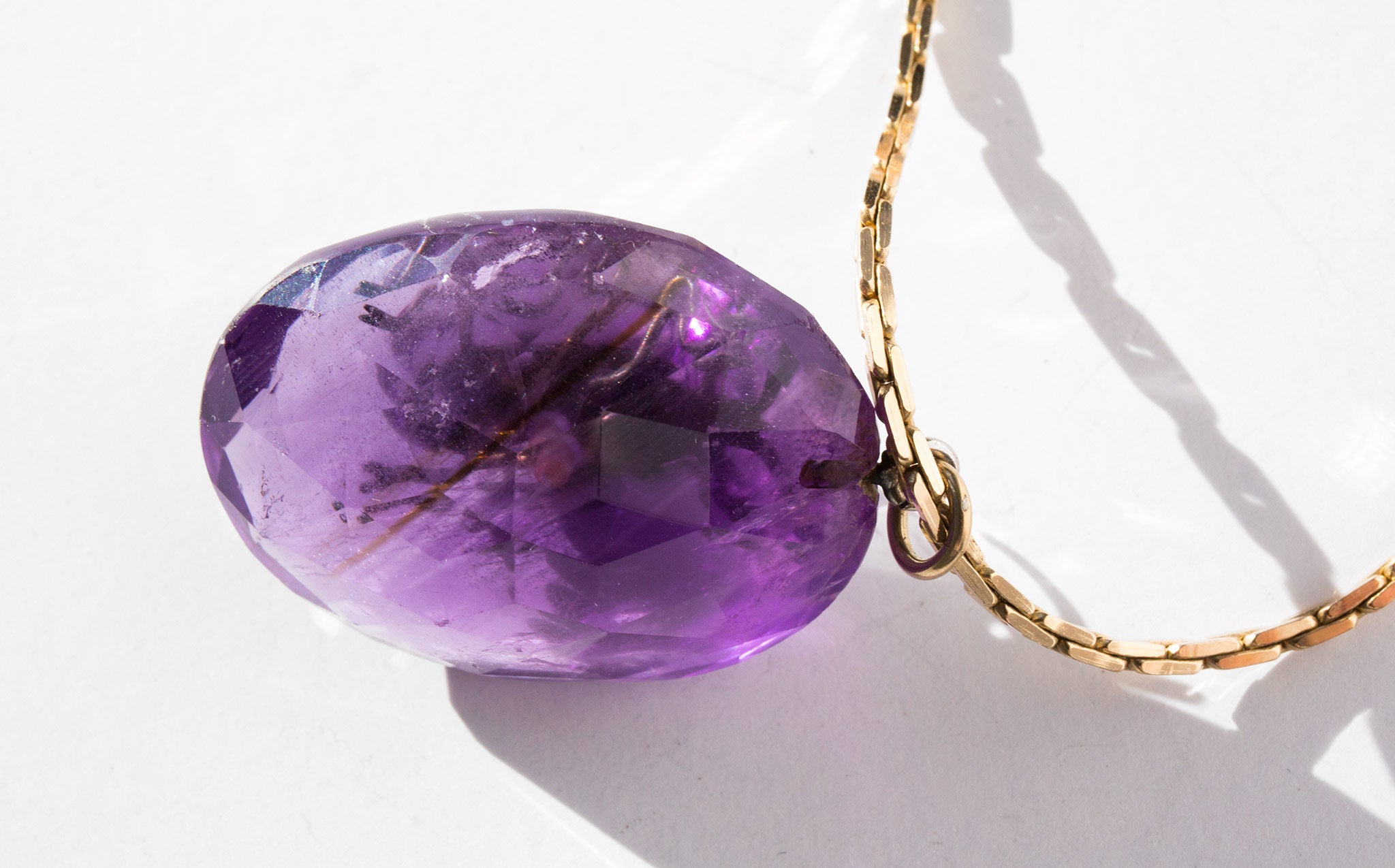
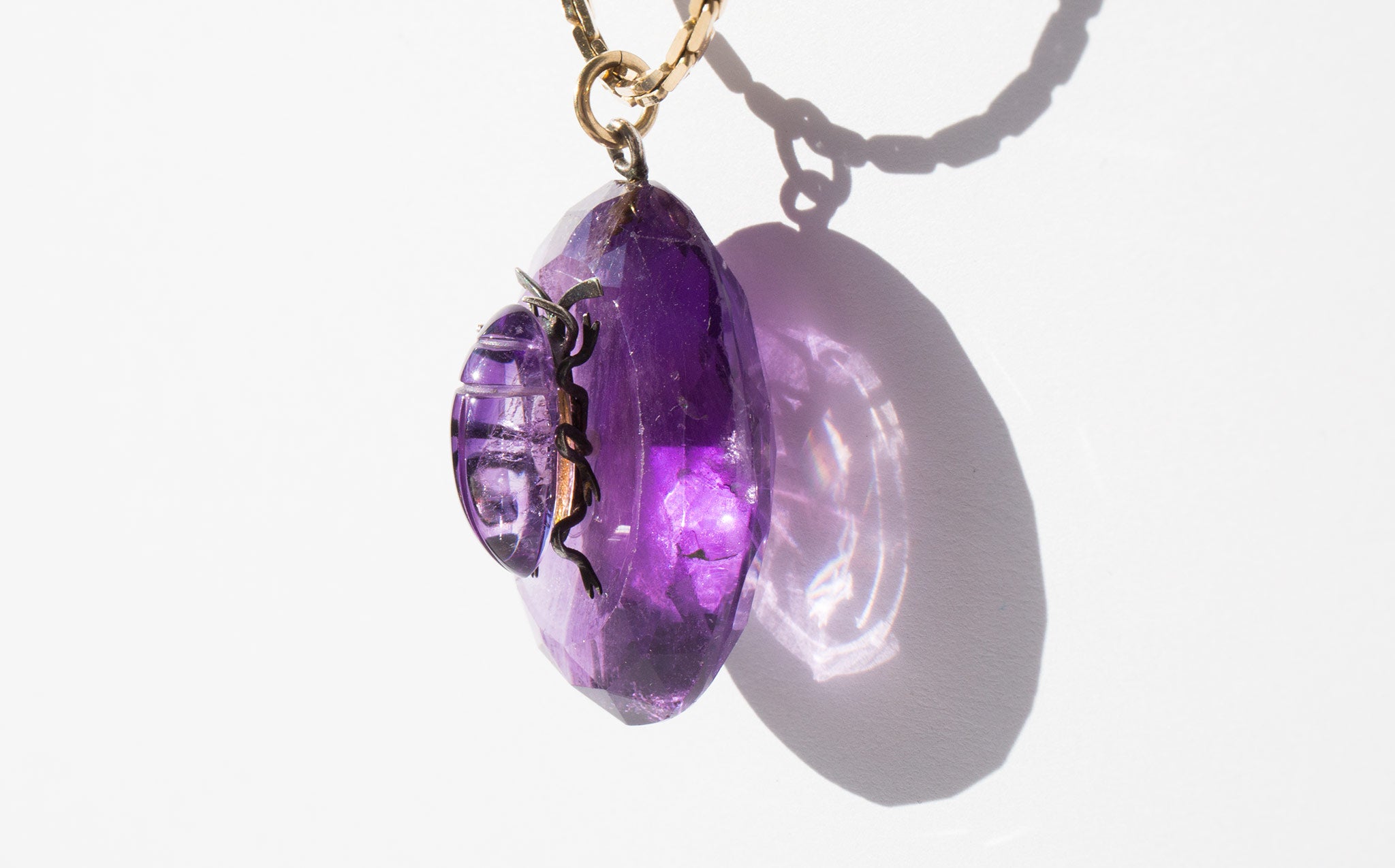



The Jewel of Denial
Archeological discoveries during the Victorian era influenced fashion and Egyptian Revival jewelry was very en vogue. It was also an era when urban Victorians were becoming increasingly disconnected from nature and became obsessed with bringing vignettes of a pastoral life into their controlled environments – taxidermy, fauna under small display domes, and adorning their finery and jewelry with real or representations of bugs and insects were all commonplace.
Amethyst has been worn throughout the centuries as a symbol of purity and spirituality, an amulet of protection against evil, and as a talisman of success and wealth.
In Ancient Egypt, scarab amulets were used to protect the deceased in the afterlife. “Heart Scarabs” with inscriptions from the Book of the Dead were placed on the chest of the mummy and were supposed to prevent the heart from revealing any offenses against the gods during the final judgement. For the living, a scarab amulet provided the wearer with protection and confidence in the certain knowledge of reincarnation. This belief sprang from the Egyptians understanding of the ways of the scarab or dung-beetle – a large insect that after laying its eggs in a ball of dung, rolls the ball before it wherever it goes. When the young beetles hatch they appear, seemingly miraculously, from the dung. For the ancient Egyptians, this behavior came to represent the actions of the sun god Khepri who was thought to push the sun through the sky. The beetle’s life cycle then came to symbolize spontaneous creation, rebirth, and resurrection – like the soul rising from the dead.